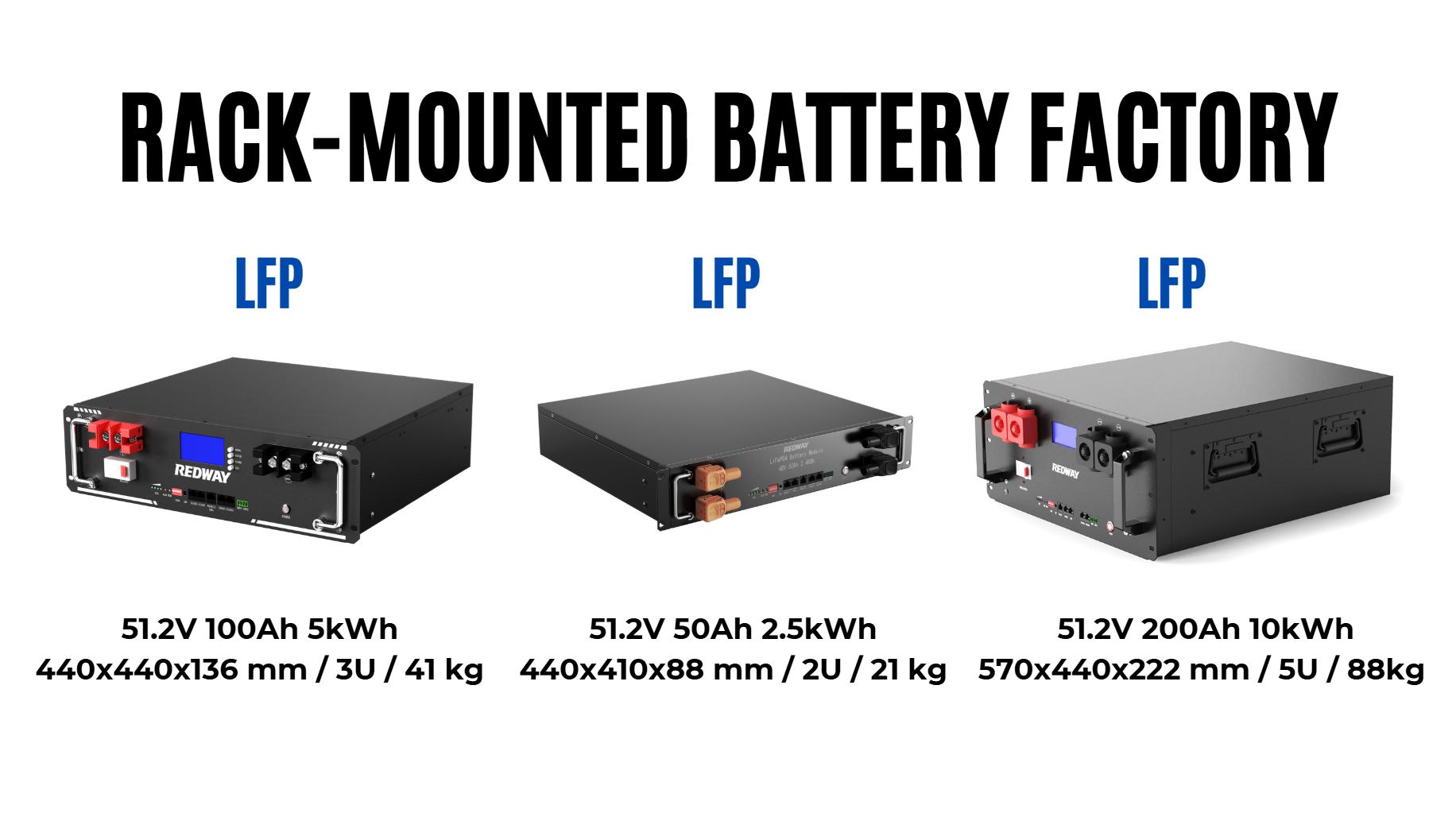Installing rack-mounted lithium batteries, such as LiFePO4 batteries, requires careful planning and execution to ensure optimal performance and safety. This guide provides a detailed, step-by-step process for installing these batteries effectively.
To install rack-mounted lithium batteries:
- Pick a well-ventilated location.
- Securely mount them using proper racks.
- Connect wires by matching positive to positive.
- Set up monitoring systems if needed.
- Test all connections before using any devices!
1. Gather Necessary Tools and Materials
Before starting the installation, ensure you have all required tools and materials:
- Tools: Screwdrivers, wrenches, pliers, multimeter, and cable cutters.
- Materials: Rack-mounted lithium batteries, battery rack, mounting brackets, cables, connectors, and a battery management system (BMS).
2. Choose the Installation Location
Select an appropriate location for the battery rack:
- Ventilation: Ensure the area is well-ventilated to prevent overheating.
- Accessibility: Choose a location that allows easy access for maintenance and monitoring.
- Protection from Elements: Avoid areas exposed to extreme temperatures, humidity, or moisture.
3. Prepare the Rack
Assemble the battery rack according to the manufacturer’s instructions:
- Secure Mounting: Ensure the rack is securely anchored to the ground or wall to prevent tipping.
- Adjust for Size: Confirm that the rack dimensions accommodate the specific size and number of batteries being installed.
4. Install the Batteries
Carefully place the batteries onto the rack:
- Orientation: Position the batteries according to manufacturer specifications, ensuring proper alignment with connectors.
- Securely Fasten: Use the provided mounting brackets to securely fasten the batteries to the rack.
5. Connect the Battery Management System (BMS)
A robust BMS is crucial for the safe operation of lithium batteries:
- Wiring: Connect the BMS according to the manufacturer’s wiring diagram, ensuring that all connections are secure.
- Monitoring: Ensure that the BMS provides real-time monitoring of battery voltage, temperature, and state of charge.
6. Make Electrical Connections
Now, connect the batteries to the power system:
- Positive and Negative Connections: Use appropriate gauge cables to connect the positive and negative terminals of the batteries to the power system. Ensure polarity is correct to avoid damage.
- Parallel or Series Configuration: Depending on your system requirements, connect the batteries in parallel or series. Follow the manufacturer’s guidelines for configurations.
7. Check for Proper Grounding
Grounding is essential for safety:
- Grounding Cable: Connect a grounding cable from the battery system to a proper ground point.
- Verify Connections: Ensure all connections are tight and corrosion-free.
8. Perform a System Check
Before powering up the system, conduct a thorough check:
- Visual Inspection: Inspect all connections, wiring, and battery placement to ensure everything is secure and correctly configured.
- Multimeter Test: Use a multimeter to verify voltage levels and ensure proper connections.
9. Power Up the System
Once everything is checked, power up the system:
- Initial Startup: Switch on the power and monitor the BMS for any alerts or warnings.
- Observe Behavior: Watch for unusual sounds, heat, or alarms during the initial startup phase.
10. Monitor and Maintain
After installation, regular monitoring and maintenance are essential:
- Routine Checks: Periodically inspect connections, battery health, and the BMS for any issues.
- Temperature Monitoring: Ensure that the operating temperature remains within the recommended range.
11. Conclusion
Following this step-by-step guide ensures a safe and effective installation of rack-mounted lithium batteries. Proper installation not only enhances battery performance but also prolongs the life of your battery system. For high-quality LiFePO4 battery solutions, contact Redway Battery for expert support and custom solutions tailored to your needs.




